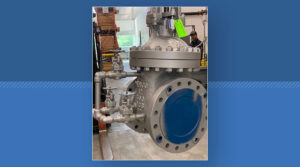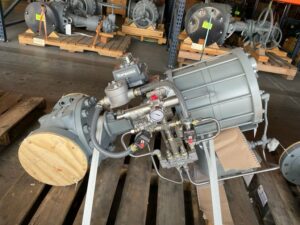
Actuated Valve – Working Principle and Types
Actuated valves provide the foundation of flow control for any modern process system. An actuated valve operates externally through a coupled mechanical force known as an actuator. This article will review how an actuated valve works, different types of actuated valves, a diagram, and its operation vs. a solenoid valve and control valve.
How Does an Actuated Valve Work?
Actuated valves typically function as an on-off mechanism to allow or block fluid flow. Sometimes, they provide partial flow allowance if required by the process. The regulation of fluid flow is essential in any modern process system. Actuated valves ensure the fluid is sealed and distributed appropriately throughout the system.
An actuated valve operates by either manual, electrical, pneumatic, hydraulic, self-actuated, or spring force. These valves are typically used in process systems where open and close operations are required.
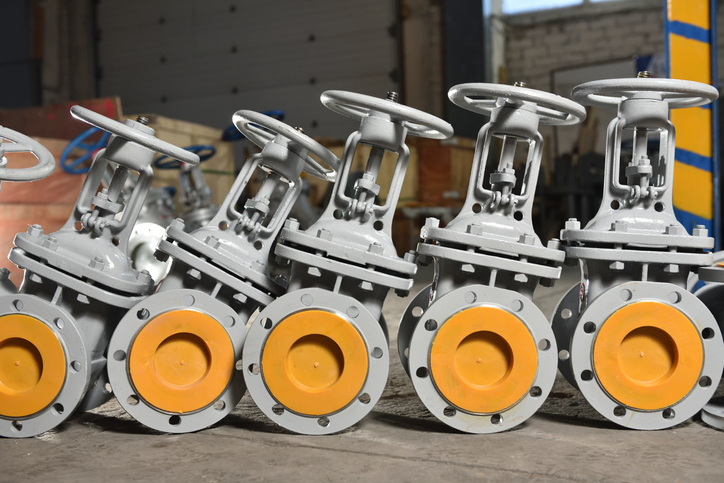
Engineers must ensure that the actuated valve deploys the proper actuation method. For instance, manual actuation for a blowoff valve would likely be too slow. In such a case, pneumatic or hydraulic actuation provides a better solution due to a near-instantaneous response rate.
Additionally, torque and accessibility requirements provide another selection criteria.
Types of Actuated Valves
There are several different types of actuated valves such as manual, electrical, pneumatic, hydraulic, self-actuated, and spring.
Manually Operated
Whether, via a handwheel, gears, or lever, manual action by a plant operator causes the valve to actuate. This method provides one of the easiest means of actuation; however, it loses practicality for valves situated in hazardous locations, out of reach of an operator, high number of turns required to open/close the valve, and excessive torque requirements. It typically provides a good fit for applications in accessible, non-hazardous locations that require infrequent operation.
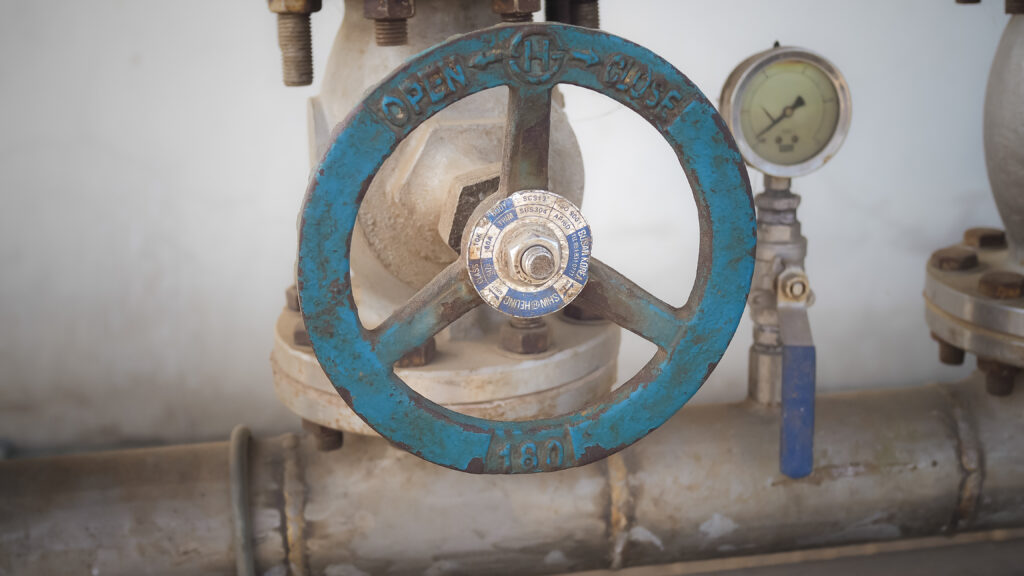
Electrical Actuation
This type of actuation uses electricity as the primary means of actuation. There are several different methods of harnessing electricity to provide opening and closing. An electrical actuator moves the valve via an electric motor in one variation.
Another method is to employ a solenoid to open or close a valve.
A third type, the control valve, allows for specific positioning of the valve between the fully open and fully closed setting based on the modulation of an electrical signal.
Pneumatically Actuated
This actuation method uses gas, or air, to apply external pressure to a piston housed in a closed cylinder or diaphragm to fully open or close the valve. The process is operated through circuitry to control air signals or a manual switch.
Hydraulic Actuated Valves
Hydraulic fluid, typically oil, acts on a piston to actuate the valve. This type of actuation operates similar to pneumatic, with fluid pressure creating thrust that acts on the piston.
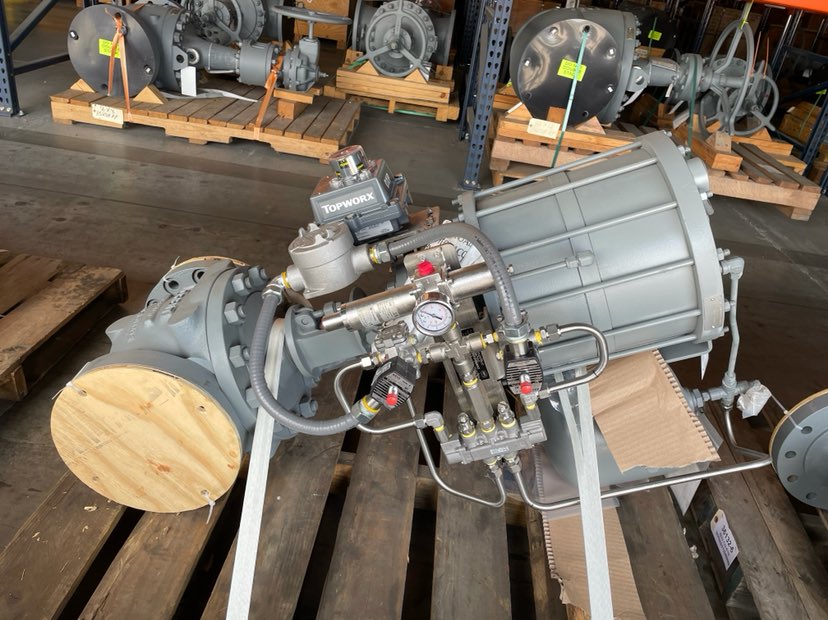
Self Actuated Valves
These valves use the system media to move the valve. Unlike pneumatic and hydraulic actuated valves, they do not require additional input to operate. The self-actuated valve is uncomplicated and is designed to maintain a set-point pressure. Self-actuated valves include relief valves, safety valves, and check valves.
The spring-actuated valve is designed to be single-use. Upon the occurrence of a predetermined event, such as an over-pressurization or loss of power, a spring releases, and the valve operates. The spring-actuated system sometimes categorizes as self-actuation depending on the set-up. However, the spring actuation may be external to the valve, whereas the self-actuation set-up is completely self-constrained. The spring provides a one-time use, as it can’t reset after use.
Spring Actuated Valves
Actuated Valve Diagram
Below are diagrams of various actuated valves. An actuated valve can have many different permutations as it involves a specific valve type (gate, ball, globe, etc.) with a specific actuator (pneumatic, electric, spring, etc.).
Actuated Valve vs. Solenoid Valve
While a solenoid valve technically classifies as an actuated valve, the solenoid valve functionality is often directly compared to an actuated valve.
The term actuated means that the valve can be initiated by any means. This contrasts with fully automatic solenoid valves that contain no manual mechanisms. Either AC or DC voltage dictates their opening and closing.
In the body of a solenoid valve, there is a small orifice that opens or closes to allow or block the flow. A plunger in the body forces the orifice to open or close via upward and downward movement. This energizes the coil and completes the cycle.
In general, the fastest actuation is provided by hydraulic, pneumatic, and solenoid actuators. However, solenoids lack practically for large valves due to excessive size and power requirements. Also, hydraulic and pneumatic actuators require a system for providing hydraulic or pneumatic energy. The speed of actuation, in either case, can be set by installing appropriately sized orifices in the hydraulic or pneumatic lines.
| Actuated Valve | Solenoid Valve |
| Most options are slower acting than a solenoid valve | Very fast acting |
| Manual, electrical, pneumatic, hydraulic, self-actuated, and spring | AC or DC supply power in various voltages. |
| High back pressures and high inlet pressure permitted | Back pressure and inlet pressure limitations based on size and design |
| Very high flow rates w/low pressure drop | Lower flow |
| Manual override | No manual override |
Actuated Valve vs. Control Valve
Control valves are a subset of actuated valves. A Control valve is an actuated valve that uses precise electrical signals to position the valve is a specific location to provide a high degree of flow control capability. The controller responds to voltage input by either opening or closing the valve.
A control valve controls and regulates the flow of a liquid at specific set points. These points may include density, flow rate, pressure, temperature, or liquid level, and it has a valve body, and actuator, which is positioned in the body assembly.
In contrast to actuated valves which typically provide a simple on/off functionality, control valves provide precise flow control and may cycle according to an integrated PLC control system’s requirements.
The control valve possesses the following characteristics:
- They provide quick responses.
- A signal generates through a controller
- They have flow characteristics directly related to valve opening


